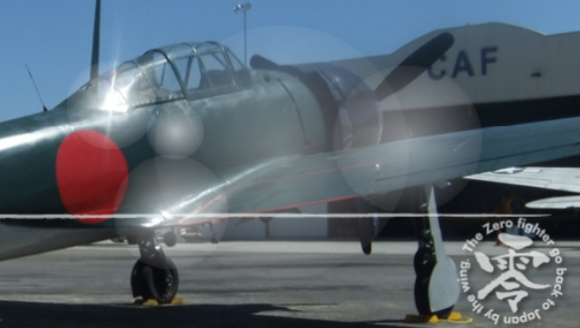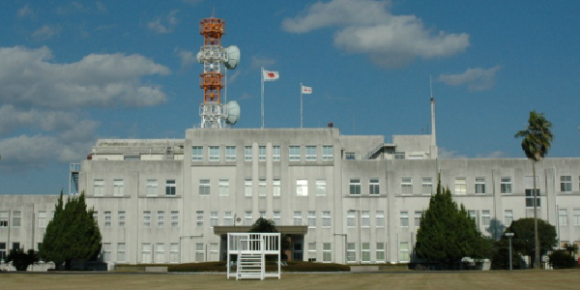
Kyushu event will be iconic aircraft’s first flight in Japan since the end of World War II.
During its half-decade production run, Mitsubishi Heavy Industries built nearly 11,000 units of the Zero, the most iconic Japanese fighter plane of World War II. However, as a lightly armored piece of military hardware that was on the losing side of the largest armed conflict in history, there aren’t that many of the planes left anymore. Filter out the non-operational survivors, and out of all the Zeroes that left the factory, less than ten are still capable of flight.
Given that scarcity, it’s a rare sight to see the storied fighter in the sky, so military aviation enthusiasts are excited about an upcoming Zero flight scheduled for later this month. What will make the event even more significant is that it will happen in Japan, marking the first time the Zero has flown in its home country since World War II.
The plane in question, a flight-worthy Type 22 Zero, had until recently been located in the suburbs of Rabaul, New Guinea. Masahide Ishizuka, a 54-year-old Japanese national residing in New Zealand, has been the central figure in the fighter’s return to Japan. In 2007, Ishizuka, who manufactures and sells flight jackets, was asked to serve as an intermediary for a museum in Hokkaido that wished to purchase the Zero from its American owner, who had been in possession of the plane since the 1970 and restored it to operational condition.
However, shortly after the parties agreed to the terms of sale, the world economy was devastated by the financial crisis of 2008. The museum expressed a desire to back out of the sale, but this would have made the organization liable for sizeable damages, as stipulated by the contract that had been made. So instead Ishizuka sold off many of his own assets and picked up the 350 million yen (US$2.92 million) tab himself.
Now the one and only Japanese owner of a flyable Zero, Ishizuka launched the Zero Homecoming Project, with the goal of transporting the plane to Japan and putting it in the air. In September of 2014, the Zero was back in Japan, with donations solicited through the project’s website contributing some 23.4 million yen to the cause. It was subsequently moved to the Japan Maritime Self-Defense Force’s Kanoya Naval Airbase, in Kagoshima Prefecture on the southern island of Kyushu, for research purposes.
▼ Kanoya Naval Airbase
However, obtaining a flight permit turned out to be more difficult than simply submitting documentation of the Zero’s restoration process and having the plane inspected by the authorities. The Japanese government has been in the process of debating divisive revisions to its defense policies, and some felt that a public display of one of the most evocative symbols of World War II wasn’t appropriate in such a heightened atmosphere.
However, with the political climate once again settling down, on December 18 the Ministry of Land, Infrastructure, Transport and Tourism granted permission for the Zero to take to the skies, on the condition that the flight happen within roughly one month.
With the fighter finally clear for take-off, an announcement was made that the Zero, with an American pilot at the controls, will fly above Kanoya Naval Airbase on January 27. Civilian access to the facility is restricted, but organizers promise that the plane will also be visible from the surrounding area. Given the renewed interest in the Zero brought on by a pair of fictionalized accounts of their designers and plots, a large spectator turnout is expected.
Source: Sankei West via Jin
Top image: Zero Homecoming Project
Insert image: Kanoya Naval Airbase


 Sports car or fighter plane? American tuner’s Nissan GT-R looks like World War II’s Zero
Sports car or fighter plane? American tuner’s Nissan GT-R looks like World War II’s Zero 10 things you probably didn’t know about Pearl Harbor
10 things you probably didn’t know about Pearl Harbor Controversial My Hero Academia character gets new name, comes with risk of yet another controversy
Controversial My Hero Academia character gets new name, comes with risk of yet another controversy Starbucks Japan ready to get Year of the Horse started with adorable drinkware and plushies【Pics】
Starbucks Japan ready to get Year of the Horse started with adorable drinkware and plushies【Pics】 We found possibly the quietest Japanese-style hotel in Tokyo’s bustling Shinjuku district
We found possibly the quietest Japanese-style hotel in Tokyo’s bustling Shinjuku district Internet survey sheds light on how Japanese women deal with the hair ‘down there’
Internet survey sheds light on how Japanese women deal with the hair ‘down there’ Dragon Quest Burgers and Slime drinks are coming to McDonald’s Japan【Video】
Dragon Quest Burgers and Slime drinks are coming to McDonald’s Japan【Video】 Private open-air bath is the crowning gem at this Japanese-style hotel in Tokyo
Private open-air bath is the crowning gem at this Japanese-style hotel in Tokyo 6 reasons why Pokémon GO might make a comeback, according to P.K. Sanjun
6 reasons why Pokémon GO might make a comeback, according to P.K. Sanjun We both do and do not recommend hiking to Tokyo’s beautiful mountain beer garden in midsummer
We both do and do not recommend hiking to Tokyo’s beautiful mountain beer garden in midsummer Japan’s deadliest food claims more victims, but why do people keep eating it for New Year’s?
Japan’s deadliest food claims more victims, but why do people keep eating it for New Year’s? Coca-Cola’s new limited-edition Japan travel destination bottles highlight history and culture
Coca-Cola’s new limited-edition Japan travel destination bottles highlight history and culture Hello Kitty Choco Egg figures are an adorable trip through three periods of Japanese pop culture【Pics】
Hello Kitty Choco Egg figures are an adorable trip through three periods of Japanese pop culture【Pics】 Disillusionment at Tsukiji’s tourist-target prices led us to a great ramen restaurant in Tokyo
Disillusionment at Tsukiji’s tourist-target prices led us to a great ramen restaurant in Tokyo Japan may add Japanese language proficiency, lifestyle classes to permanent foreign resident requirements
Japan may add Japanese language proficiency, lifestyle classes to permanent foreign resident requirements Lacquerware supplier to emperor of Japan and Pokémon team up for new tableware
Lacquerware supplier to emperor of Japan and Pokémon team up for new tableware Starbucks Japan releases new zodiac chilled cup drink for 2026
Starbucks Japan releases new zodiac chilled cup drink for 2026 7-Eleven Japan’s ramen-cooking robot whipped us up a bowl of noodles【Taste test】
7-Eleven Japan’s ramen-cooking robot whipped us up a bowl of noodles【Taste test】 Cyberpunk anime meets traditional culture in Ghost in the Shell gold leaf Japanese changing screens
Cyberpunk anime meets traditional culture in Ghost in the Shell gold leaf Japanese changing screens 7 great places to see Mt. Fuji from without having to climb it
7 great places to see Mt. Fuji from without having to climb it Japan’s otoshidama tradition of giving kids money at New Year’s gets a social welfare upgrade
Japan’s otoshidama tradition of giving kids money at New Year’s gets a social welfare upgrade Japan’s human washing machines will go on sale to general public, demos to be held in Tokyo
Japan’s human washing machines will go on sale to general public, demos to be held in Tokyo 7-Eleven Japan starts new temporary luggage storage service in over 300 branches
7-Eleven Japan starts new temporary luggage storage service in over 300 branches Starbucks teams up with 166-year-old Kyoto doll maker for Year of the Horse decorations【Photos】
Starbucks teams up with 166-year-old Kyoto doll maker for Year of the Horse decorations【Photos】 Tokyo considering law requiring more trash cans following litter increase in heavily touristed area
Tokyo considering law requiring more trash cans following litter increase in heavily touristed area Tokyo’s Tsukiji sushi neighborhood asks tour groups to stay away for the rest of the month
Tokyo’s Tsukiji sushi neighborhood asks tour groups to stay away for the rest of the month Nintendo’s Kirby now delivering orders at Kura Sushi restaurants, but not in Japan
Nintendo’s Kirby now delivering orders at Kura Sushi restaurants, but not in Japan Tokyo event lets you travel back in time, for free, to celebrate 100 years since Showa era start
Tokyo event lets you travel back in time, for free, to celebrate 100 years since Showa era start Sanrio theme park in Japan announces plans to expand into a Sanrio resort
Sanrio theme park in Japan announces plans to expand into a Sanrio resort Stamina-destroying “Paralysis Noodles” are Tokyo’s newest over-the-top ramen innovation
Stamina-destroying “Paralysis Noodles” are Tokyo’s newest over-the-top ramen innovation Survey asks foreign tourists what bothered them in Japan, more than half gave same answer
Survey asks foreign tourists what bothered them in Japan, more than half gave same answer We deeply regret going into this tunnel on our walk in the mountains of Japan
We deeply regret going into this tunnel on our walk in the mountains of Japan Studio Ghibli releases Kodama forest spirits from Princess Mononoke to light up your home
Studio Ghibli releases Kodama forest spirits from Princess Mononoke to light up your home Major Japanese hotel chain says reservations via overseas booking sites may not be valid
Major Japanese hotel chain says reservations via overseas booking sites may not be valid Put sesame oil in your coffee? Japanese maker says it’s the best way to start your day【Taste test】
Put sesame oil in your coffee? Japanese maker says it’s the best way to start your day【Taste test】 No more using real katana for tourism activities, Japan’s National Police Agency says
No more using real katana for tourism activities, Japan’s National Police Agency says The top 10 annoying foreign tourist behaviors on trains, as chosen by Japanese people【Survey】
The top 10 annoying foreign tourist behaviors on trains, as chosen by Japanese people【Survey】 Starbucks Japan reveals new sakura drinkware collection, inspired by evening cherry blossoms
Starbucks Japan reveals new sakura drinkware collection, inspired by evening cherry blossoms
Leave a Reply